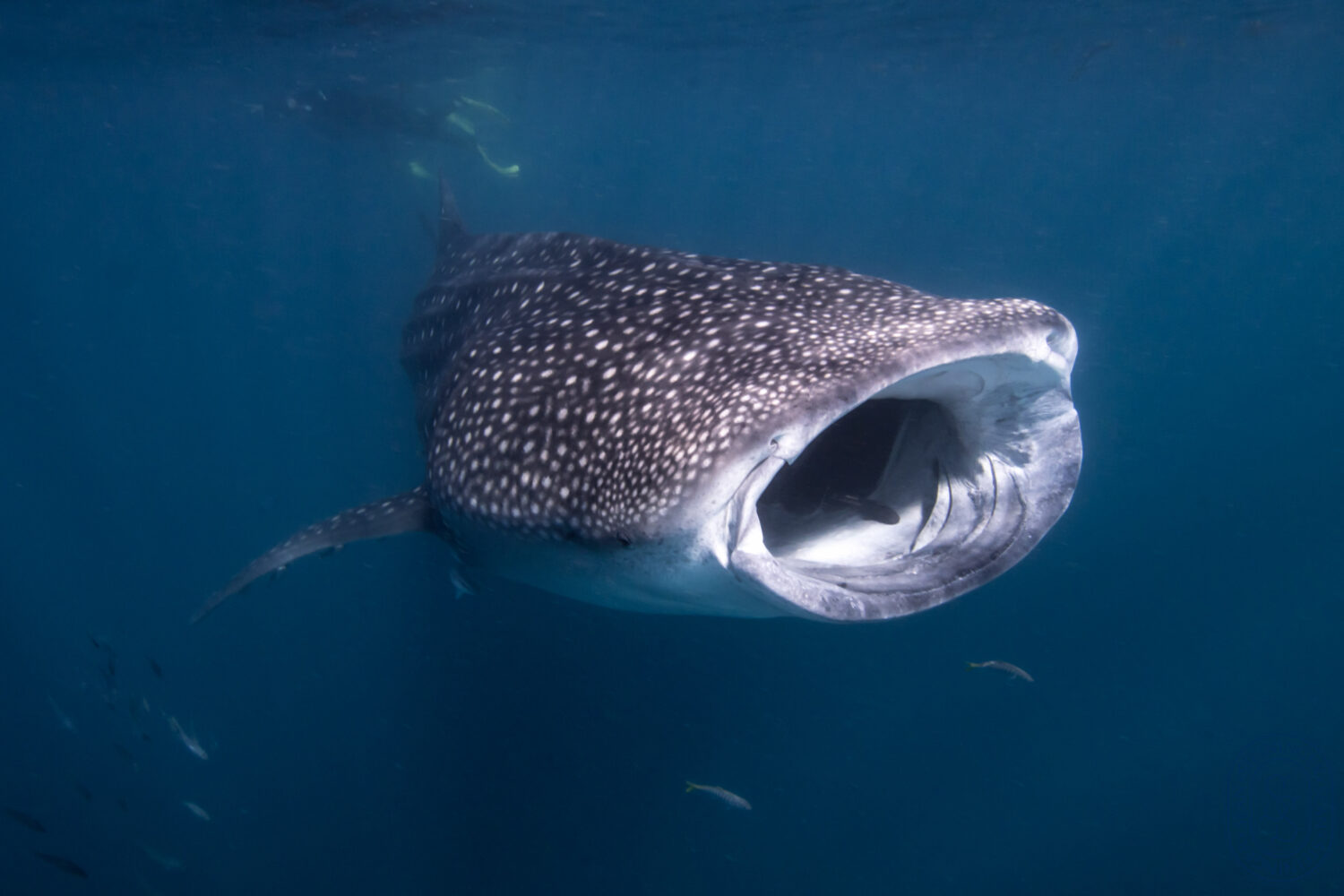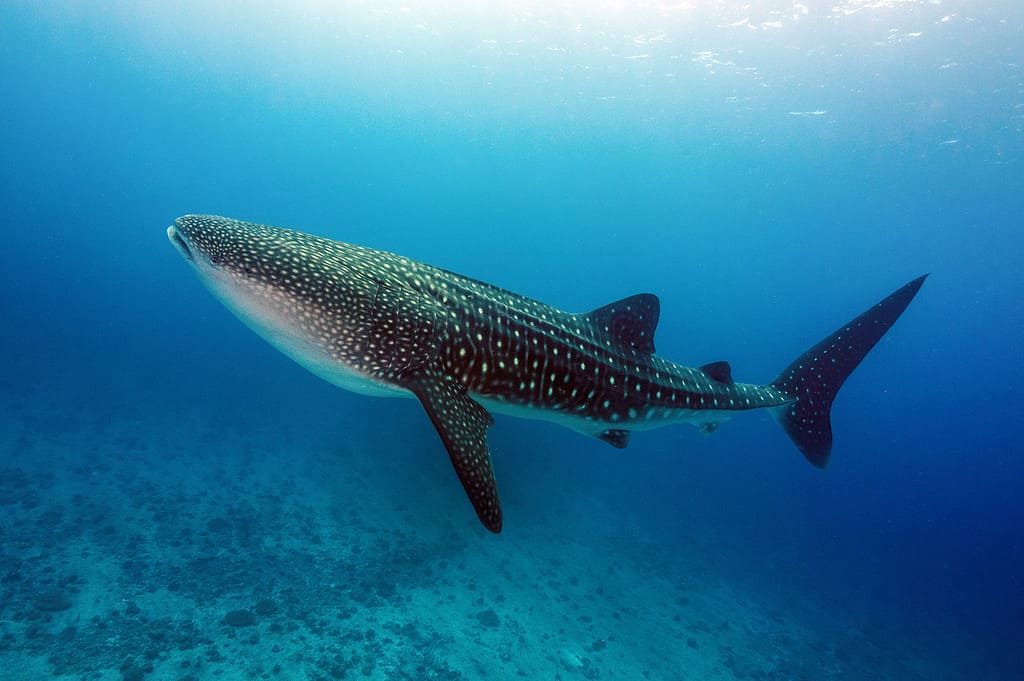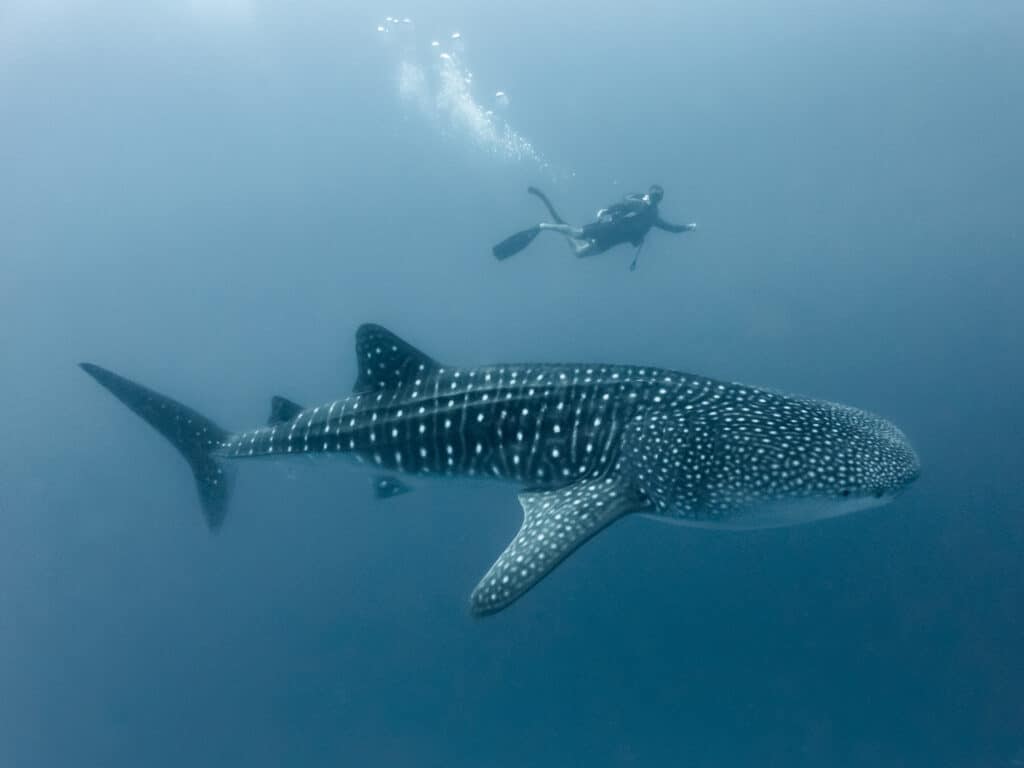Are Whale Sharks Endangered and How Many Are Left In the World?
A gentle giant of the ocean, the whale shark is a breathtakingly beautiful, and enormous shark that captures the hearts of any who have had the honor of swimming alongside them. Tragically, as is currently the case with many large shark species, the magnificent whale shark is currently under threat from industrial civilization.
Read on to learn more about this amazing animal and what threats their population faces.
Overview of the Whale Shark
The stunning, graceful whale shark (Rhincodon typus) is not only the largest species of shark in the world, but it also holds the title of the world’s largest fish. These magnificent animals can weigh up to a staggering 80,000 pounds and grow over 40 feet long. Marine biologists estimate they can live over 100 years.
Classification
Their common name can cause confusion for some folks when discerning what type of marine animal they are. While their size, feeding habits, and overall appearance are reminiscent of some whale species, Rhincodon typus is a shark. They have five large gill slits on either side of their body and their skeleton is comprised of cartilage, rather than bone. The whale shark is the only member of its genus, Rhincodon, and the only living member of its family, Rhincodontidae. Visually, and taxonomically, whale sharks truly are unique.
Diet of the Whale Shark
While some may shudder at the size of an 80,000-pound, 40-foot-long shark patrolling the oceans, these enormous animals pose no threat to people. Like their cousin, the manta ray, and some species of whales, the whale shark is a filter feeder. They feed primarily on zooplankton, which are tiny marine animals such as krill. Crab and fish larvae, small schooling fish, and tiny jellyfish are also on the menu.
Whale sharks feed by swimming very slowly with their enormous mouths open, sucking in seawater and filtering food through sieve-like filter pads at the entrance of their throats. They can consume about 70 pounds of food per day, gulping down about 10,000 gallons of water in the process.

©Sean Steininger/Shutterstock.com
Range
Currently, whale sharks occur in all warm-temperate and tropical oceans of the world. They rarely live in waters cooler than 70 degrees Fahrenheit. Scientists estimate that about 75% of the global whale shark population lives in the warm waters of the Indo-Pacific Ocean. The remaining 25% concentrate in the Atlantic Ocean. Specifically, they occur most commonly between the latitudes 30°N and 35°S. They are highly migratory, however, and can travel thousands of miles seasonally.

©Jan Finsterbusch/Shutterstock.com
Are Whale Sharks Endangered?
In the past 75 years, the global population of whale sharks has plummeted 50%. This startling decline prompted the International Union for Conservation of Nature (IUCN) to list the whale shark as Endangered. Previously, the organization listed the whale shark as Vulnerable, but recent research suggests that whale sharks are facing increasing pressures and habitat loss. Specifically, the whale shark population in the Indo-Pacific is facing a steady decline.
Are Whale Sharks Endangered: How Many Are Left?
According to the IUCN and a number of other scientific organizations, there are about 120,000-240,000 adult whale sharks left in the world. Since whale sharks are highly migratory and difficult to track, these numbers are an estimation. Currently, there is no gold-standard method for determining the global whale shark population. The estimates from the IUCN stem from a global-scale genetic study on whale sharks. In smaller scale estimations, some studies use ariel surveys to count local populations. Researchers can combine the results of these surveys across regions for a better understanding of population trends.
Are Whale Sharks Endangered: What is Causing the Decline?
Particularly in the Indo-Pacific, habitat loss or degradation, coastal development, land-based pollution, boat strikes, noise pollution, and demand for their meat, fins, and oil are all contributing to population decline. Overfishing represents a particular strain on whale sharks. Industrial pollution of the seas also highly impacts this beautiful species as pollution causes a loss in marine biodiversity and coral reef health, which researchers believe has a negative effect on the zooplankton populations that whale sharks feed on.

©Katja Tsvetkova/Shutterstock.com
Current Whale Shark Conservation Efforts
In the face of a globally declining population, organizations are working to save whale sharks from slipping further toward extinction. One such group is the Maldives Whale Shark Research Programme, which carries out research and facilitates community-driven conservation efforts in the Maldives. Currently, whale sharks are not a well-understood species. The more we understand about the species, the better chance conservationists have of protecting the population. Additionally, the more people care, learn about, and connect to this incredible animal, the more support conservationists have. As such, the Maldives Whale Shark Research Programme facilitates both data-driven research expeditions and community engagement, hosting youth programs, collective research, and whale shark festivals.









